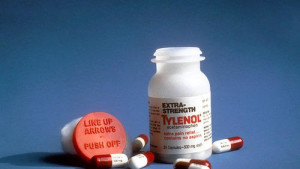Following the Tylenol incident of 1982, many thought Johnson & Johnson would never be able to recover from the tragic incident that killed seven innocent people. It was how Johnson & Johnson handled the situation and used it as an opportunity ensure the future safety of their consumers.
On September 29, 1982, the first death caused by the ingestion of extra-strength Tylenol was reported in a Chicago suburb. Within the next week, six other Tylenol related deaths were reported. This was no coincidence. Johnson & Johnson wasted no time and took immediate action. They pulled all Tylenol products from shelves across the country. Johnson & Johnson made it very clear that their first and foremost priority was that of their customers.
Investigation began shortly after the the incidents were reported. After a thorough investigation of the packaging and distribution process, Johnson & Johnson concluded that the bottles were tampered with after being distributed. An unnamed suspect had removed the tylenol from the capsules and refilled each capsule with potassium cyanide, a lethal drug with fatal consequences in even the tiniest of ingestions. A $450,000 reward was being offered for the killer.
Johnson & Johnson wasted no time and began working toward rebuilding the Tylenol brand and regaining trust from their consumers. A few months after the incidents, Johnson & Johnson slowly began to re-introduce Tylenol to the public. They advertised their new tablets that were safer and less likely to be tampered with. Johnson & Johnson chairman James Burke made public appearances via TV and interviews. He explained the new safety pre-cautions that Johnson & Johnson were taking to ensure that this never happen again.
Johnson & Johnson set up toll free hotline where concerned customers could call to ask any questions about Tylenol that they might have. Coupons were distributed to each caller to promote the new tablets and assure customers that cautionary measures were being taken. Once the public saw how seriously Johnson & Johnson was taking this tragic and truly life-threatening situation, they began to realize that Johnson & Johnson wasn’t to blame for the deaths of those seven people. What really made the public stay loyal to Tylenol was the fact that although Johnson & Johnson knew they weren’t at fault, they assumed responsibility and did everything they could to protect their consumers, regardless of the financial consequences (which were very serious). Prior to the incidents, Tylenol held a 37% market share. Following the incidents, they dropped to a 7% market share and lost nearly $100 million in bottle removal. Tylenol pulled approximately 31 million bottles from shelves across the country.
Within one year of the incidents, Tylenol had made a nearly full recovery regaining a 30% market share. This incredible recovery was made possibly only through the hard work of the newly established PR team, which was developed in response to the incident. Since Johnson & Johnson had absolutely no crisis management plan already established, they truly had to start from scratch to rebuild their reputation. I think their efforts are truly admirable. They assumed all responsibility and made a beautiful recovery by addressing the problem rather than ignoring it. Their incredible crisis management has been mimicked by numerous companies and should be regarded as a historic event in the public relations world.

Recent Comments